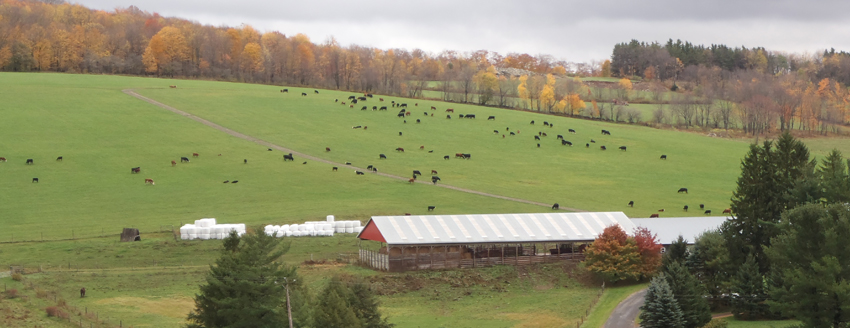WFP Funding
The programs of Watershed Agricultural Council are 100% voluntary. As a landowner, when you agree to follow the prescribed Whole Farm Plan (WFP), your farm operation will be following state-of-art best management practices (BMPs) that benefit water quality and land conservation. In exchange for your willingness to participate in the Watershed Agricultural Program (WAP), the City of New York funds the projects recommended within the WFP.
With funding from New York City Environmental Protection (DEP), the WAP provides you with technical and financial assistance to achieve your Whole Farm Plan goals. These land and water conservation measures, or Best Management Practices, may include:
- A Nutrient Management Plan
- Heavy Use Area Pad
- Water diversion
- Fencing and watering facility
- Or one of a hundred other approaches to keeping water clean, drinkable and clear.
In the Catskill/Delaware watershed, DEP pays 100% of the cost to create and implement your Plan’s recommendations through the Watershed Agricultural Program. In the Croton watershed, landowners are covered too, but generally contribute up to 50%, depending on the cost guidelines.
Often, the WAP will draw upon additional funding sources to pay for your farm improvements. Supplementary financial options open to landowners might include
- USDA NRCS Conservation Stewardship Program (CSP)
- USDA NRCS Conservation Reserve Program (CRP)
- USDA Farm Service Agency Conservation Reserve Enhancement Program (CREP)
- USDA NRCS Environmental Quality Incentive Program (EQIP)
- USDA NRCS Wildlife Habitat Incentive Program (WHIP)
Other federal, state and local programs offer Payment for EcoServices (PES), compensating landowners for their involvement in these natural resource conservation programs.
In most cases, the landowner does not pay for the farm improvements that benefit water quality; the City of New York does. This public/private partnership’s unique success lies within the beneficial relationship between the landowner/farmer and over nine million people downstream. The City of New York and its residents use over 1-billion gallons of potable water each day, thanks to the efforts of watershed landowners upstream.

